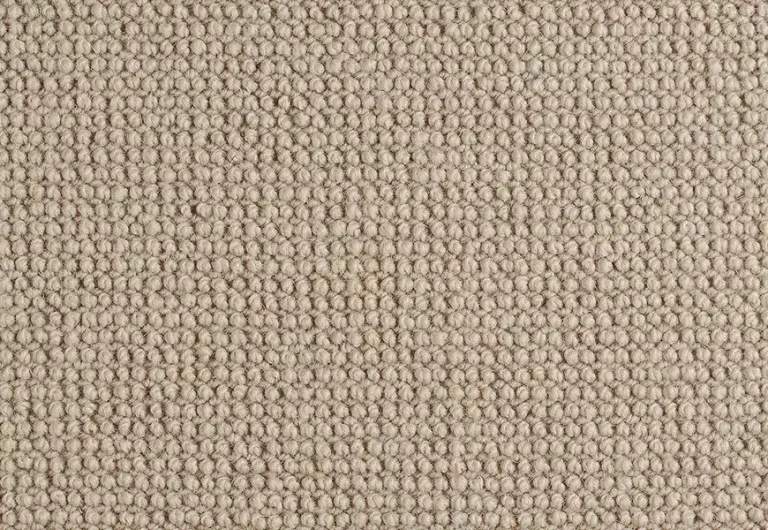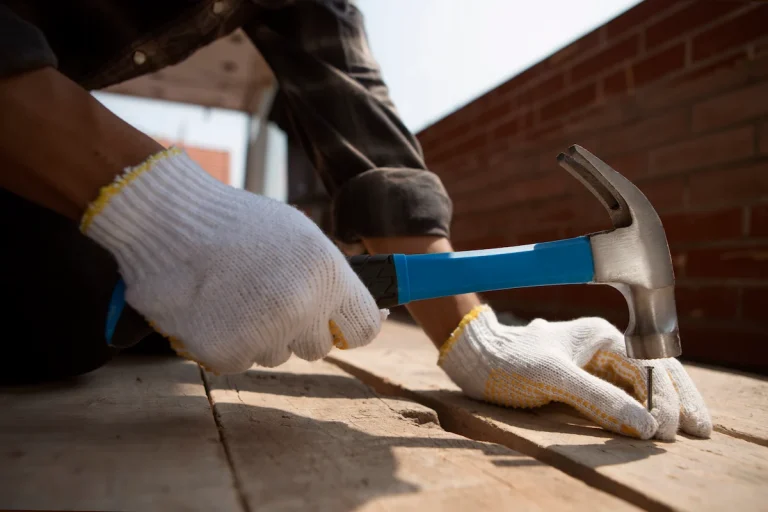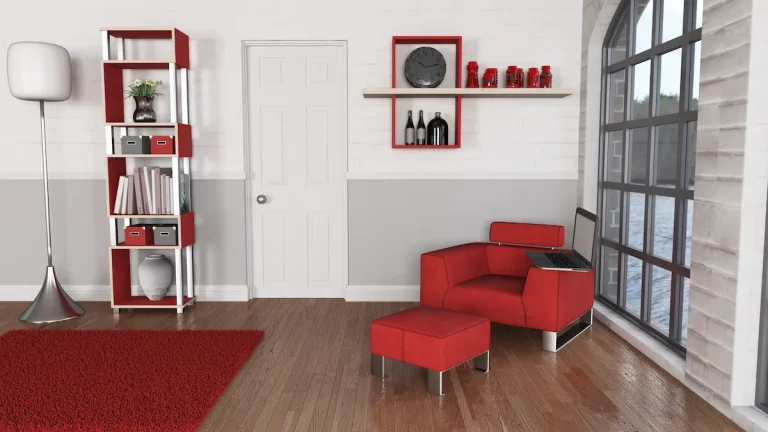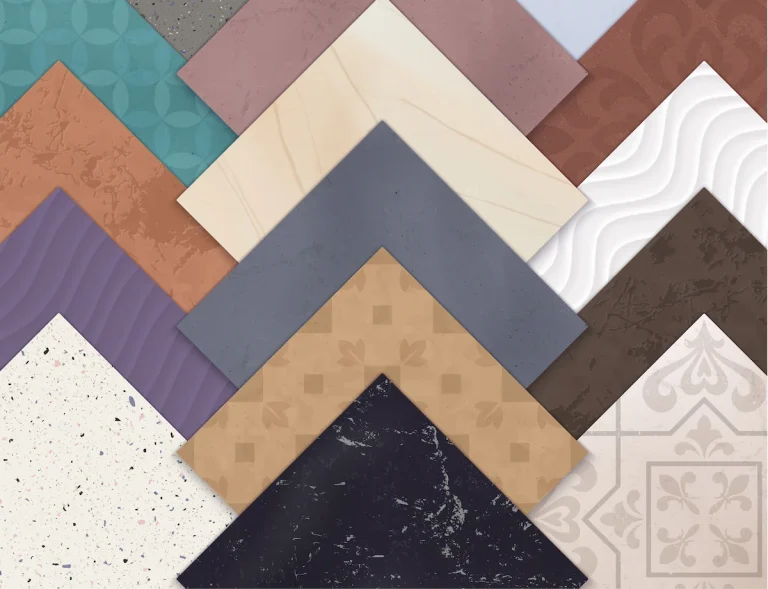In the realm of home decor, carpets serve a vital function in enhancing warmth and comfort within a space. How long should carpets last? A thorough understanding of how to extend the lifespan of carpets is essential for maintaining an aesthetically pleasing and inviting environment.
This article examines the various factors that influence average life of carpet, including the quality of materials, the effects of foot traffic, and the presence of pets. It also addresses the appropriate timing for carpet replacement and provides practical recommendations for prolonging the life of carpets. Readers are invited to explore these insights to ensure their carpets remain in optimal condition for years to come.
How long should carpets last Consider ingFactors that Affect the Lifespan of Carpets
The lifespan of carpets can differ substantially due to several critical factors, including the quality of the materials used, the volume of foot traffic they endure, the level of maintenance and care provided, and the presence of pets within the household.
Understanding these factors enables homeowners to make informed decisions regarding their carpet investments and maintenance strategies, ultimately contributing to the extension of their carpets’ lifespan.
By implementing appropriate care techniques and selecting suitable materials, homeowners can enhance both the durability and aesthetic appeal of their carpets.
a. Quality of Carpet Materials
The quality of carpet materials is a primary determinant of their lifespan, with options such as wool carpets recognised for their durability and nylon carpets esteemed for their resilience and stain resistance.
Plus these prevalent carpet types, each possesses unique characteristics that cater to diverse environments and preferences.
- Wool carpets are highly valued for their natural ability to regulate temperature, providing warmth during colder months while maintaining a cool feel in the summer.
- Conversely, nylon carpets offer outstanding stain resistance, rendering them particularly practical for busy households.
Regarding durability, wool exhibits a remarkable capacity to recover from compression, while nylon demonstrates superior resilience against wear and tear. Comfort is another critical consideration; wool generally provides a softer, more luxurious feel underfoot, whereas nylon offers a robust texture that appeals to homeowners seeking a sturdier option.
Maintenance requirements vary significantly between these materials. Wool carpets necessitate careful cleaning to prevent damage, whereas nylon carpets typically require easier upkeep, often needing only regular vacuuming to maintain their appearance and vibrancy.
b. Amount of Foot Traffic
The amount of foot traffic that a carpet endures directly influences its lifespan, with carpets located in high-traffic areas typically exhibiting signs of wear and tear more rapidly than those situated in less frequented spaces.
This consideration underscores the importance for homeowners to thoughtfully assess where to install various types of carpeting within their homes. For example, plush or delicate carpets may not be suited for the daily activities associated with a busy sitting room or corridor.
Selecting durable materials for these areas can significantly mitigate premature ageing. Additionally, incorporating carpet underlay can provide an extra layer of protection, absorbing impact and minimising damage resulting from continuous foot traffic.
To ensure the longevity of carpets, homeowners may benefit from the following recommendations:
- Choose carpets that are rated for heavy use in high-traffic areas.
- Utilise high-density underlay options for added cushioning.
- Perform regular cleaning and maintenance to prevent the accumulation of dirt that can degrade fibres.
By considering these factors, homeowners can extend the life and aesthetic appeal of their carpets.
c. Level of Maintenance and Care
The level of maintenance and care a carpet receives significantly influences its longevity. Regular cleaning practices, such as vacuuming and professional carpet cleans, are essential for preserving both its appearance and durability.
Carpet maintenance extends beyond aesthetic considerations; it plays a crucial role in enhancing indoor air quality and preventing the accumulation of allergens and dust. Regular vacuuming effectively removes dirt and grime that can accumulate deep within the fibres, thereby protecting the structural integrity of the carpet.
- Vacuuming frequency: It is advisable to vacuum high-traffic areas at least twice a week, while low-traffic sections may require attention every 10 to 14 days.
- Stain removal methods: For immediate stain removal, it is effective to blot stains using a cloth rather than rubbing. An initial treatment can be performed with a solution of warm water mixed with washing-up liquid.
- Benefits of professional cleaning: Scheduling a professional carpet clean every 12 to 18 months is recommended to remove deep-seated dirt and allergens, significantly extending the carpet’s lifespan.
By adhering to these practical carpet maintenance guidelines, individuals can maintain a clean and healthy living environment while enhancing the longevity of their carpet investment.
d. Presence of Pets
How long does carpet last with pets? The presence of pets in a household can significantly influence the lifespan of carpets, as pet hair, stains, and potential moisture damage from accidents may lead to a decline in both aesthetics and durability.
Pet owners often face several challenges in maintaining the cleanliness and condition of their carpets. Common issues include the persistent accumulation of pet hair, which can adhere stubbornly to carpet fibres, as well as unsightly stains resulting from spills or accidents. Additionally, moisture associated with pet accidents can weaken carpet fibres and foster unpleasant odours.
To effectively address these challenges, the following strategies are recommended:
- Regular Vacuuming: Frequent vacuuming can help minimise hair buildup, while utilising specialised pet hair attachments can enhance cleaning efficacy.
- Stain Removal Techniques: Prompt action is essential; blotting stains with a mixture of water and mild detergent can prevent them from setting.
- Protective Measures: Utilising area rugs or carpets specifically designed for pet owners can provide a protective barrier against damage and are often constructed to be more durable.
By employing proactive measures and utilising appropriate cleaning solutions, it is possible to maintain a clean and vibrant carpet, even in a pet-friendly environment.
How Long Do Carpets Last?
Carpets generally have a lifespan ranging from five to fifteen years, influenced by various factors including the quality of materials, maintenance practices, foot traffic, and environmental conditions.
It is essential for homeowners to be aware of the average lifespan of carpets in order to determine the appropriate time for potential replacement.
Average Lifespan of Carpets
The average lifespan of carpets varies according to their material composition, with wool carpets typically exhibiting greater longevity compared to synthetic options such as nylon or polyester, which generally last between 5 and 15 years.
When selecting a carpet, it is essential to consider lifespan expectations, as these factors can significantly influence long-term costs and maintenance requirements. Wool carpets are renowned for their durability and natural resilience, often lasting over 20 years. This extended lifespan makes them a prudent investment, despite their higher initial cost. Conversely, synthetic fibres such as nylon typically provide a lifespan of approximately 10 to 15 years, while polyester may last even less, around 5 to 7 years.
Plus the material itself, various factors—including foot traffic, maintenance routines, and cleaning practices—play a critical role in determining how long a carpet will retain its condition. Homeowners are advised to regularly inspect their carpets for signs of wear and tear, such as fading, fraying, or noticeable stains. If a carpet appears dingy or is associated with persistent odours, it may be nearing the point of replacement, regardless of its chronological age.
Understanding when to replace a carpet is essential for maintaining both the aesthetic appeal and safety of the home.
How Long Do Carpets Last with Pets?
Carpets in homes with pets typically experience a reduced lifespan, often lasting between three to seven years. This reduction in longevity can be attributed to challenges such as pet stains, hair, and increased allergens, which necessitate more comprehensive maintenance.
This situation is further complicated by the fact that many pet owners may not fully comprehend the level of cleaning and care their flooring requires to remain in optimal condition. Regular wear and tear, combined with the inevitable accidents associated with having pets, can cause carpets to appear worn and dull much more quickly than anticipated. Understanding factors affecting carpet lifespan is crucial for proper carpet care.
Understanding how to effectively care for flooring can significantly enhance its durability and protect one’s investment. Proper carpet maintenance tips are essential. To maintain healthier carpets in homes with pets, consider implementing the following recommendations:
- Regular Vacuuming: Aim to vacuum regularly at least three times a week to eliminate hair and dander.
- Spot Cleaning: Address spills and stains promptly with appropriate cleaning products to prevent them from setting.
- Professional Cleaning: Schedule deep cleaning every six to twelve months, focusing on allergen removal.
- Use Area Rugs: Employ rugs in high-traffic areas to protect the main carpet.
- Use Entry Mats: Place mats at entrances to reduce dirt tracked onto carpets.
By adopting these measures, pet owners can ensure a clean home while extending the lifespan of their carpets.
Differences in Carpet Lifespan and Durability in Different Countries
The lifespan of carpets can vary significantly across different countries, influenced by factors such as climate, cleaning habits, and cultural practices. These carpet lifespan factors are crucial for understanding. For instance, in the United Kingdom, carpets typically have an average lifespan of 8 to 12 years, largely due to specific maintenance trends.
Conversely, in regions characterised by higher humidity, such as certain parts of Southeast Asia, carpets are more susceptible to mould and deterioration, leading to an average lifespan of only 5 to 10 years. This shorter lifespan can be attributed to inadequate ventilation and less rigorous cleaning routines that are common in these areas.
Cultural practices also play a crucial role in determining carpet longevity. In countries like Iran, where traditional carpets are intricately woven, there is a pronounced emphasis on the careful maintenance of these textiles, resulting in lifespans that can exceed 15 years.
Key factors influencing carpet durability include:
- Environmental Factors: Climate and air quality significantly affect carpet durability.
- Maintenance Habits: Regular professional carpet cleaning is more prevalent in certain cultures, which positively influences longevity.
- Cultural Practices: The importance placed on carpets within various societies directly impacts their care.
- Carpet Cost: Higher investment in quality can result in longer-lasting carpets.
In conclusion, understanding the interplay of geographic and cultural differences can provide valuable insights into strategies for enhancing carpet lifespans across diverse environments.
Signs that Indicate it’s Time to Replace Your Carpet and Consider New Carpet Options
Understanding when to replace carpet is essential for maintaining a comfortable home environment and ensuring home comfort. Key indicators include:
- visible wear and tear
- persistent carpet stains
- a loss of padding and support
- an increase in allergens that can negatively impact indoor air quality
- matted carpet fibers
Wear and Tear on Carpet
Visible wear and tear are often the primary indicators that it is time to consider carpet replacement and explore new carpet options. Signs such as fraying edges, matted fibres, and discolouration signify a decline in both durability and carpet aesthetics.
As homeowners evaluate their carpets, they may observe various issues that not only diminish the overall appearance of their living spaces but also suggest a reduction in the carpet’s functionality.
Common signs of deterioration include:
- Fading colours, often resulting from prolonged exposure to sunlight, which can render a room less inviting.
- Stains and marks that are resistant to removal, indicating that the carpet may have absorbed excessive dirt and grime.
- Wrinkles or ripples that develop due to improper installation or excessive foot traffic, which may impact safety and create tripping hazards.
In general, when noticeable wear and tear are present, it may be prudent to begin contemplating a replacement. Addressing these issues promptly can help preserve the aesthetic value and comfort of the home. Consider options such as plush carpet or Berber carpet for improved carpet comfort.
Carpet Stains and Odors
Persistent carpet stains and odours can serve as significant indicators that a carpet has reached the end of its usable life, as no amount of cleaning can restore it to its original condition.
Carpets frequently encounter various stains and odours resulting from everyday activities. Common contributors include:
- Pet accidents, which introduce both stains and lingering odours
- Food and drink spills that can penetrate the fibres
- Humidity or moisture retention leading to mould growth, weakening the carpet fibers
While regular cleaning methods such as steam cleaning or spot treatments can be effective, they may prove insufficient for carpets that are severely damaged. In such cases, carpet replacement may be the most practical solution, especially when odours persist despite cleaning efforts or when the structural integrity of the carpet is compromised. Evaluating carpet warranty options can also be beneficial.
Loss of Carpet Padding and Support
A noticeable loss of carpet padding and support in carpeting can significantly affect both comfort and durability, making it a critical indicator that replacement may be necessary to maintain a pleasant environment.
Over time, wear and tear can lead to carpet padding deterioration, which often presents itself through uneven surfaces, crinkling, or a general lack of support underfoot. This situation not only diminishes the aesthetic appeal of the flooring but also contributes to discomfort during daily activities. Consider exploring cut and loop or frieze carpet for improved resilience.
To evaluate the condition of your carpet padding, consider the following:
- Examine high-traffic areas for signs of compression or sagging.
- Assess the overall cushioning by pressing down with your hand to determine firmness.
- Inspect for any moisture or mildew issues, as these can exacerbate deterioration.
If you identify significant padding loss, it may be prudent to consider replacement options. Selecting a high-quality padding material could improve overall carpet performance and restore comfort, thereby ensuring a more pleasant living space. Evaluating carpet features such as thickness and material can aid in making an informed decision.
Allergies, Carpet, and Respiratory Issues
Increased allergies and respiratory issues among household members may suggest that the carpet has absorbed allergens and requires replacement to enhance indoor air quality. Opting for soft carpet or Berber may provide relief while maintaining comfort.
Over time, carpets can trap dust, pet dander, mould spores, and various other allergens, which may become a chronic source of irritation for individuals with sensitivities. The accumulation of these irritants can significantly compromise the health and comfort of those residing in the space. It is essential to recognise the signs that indicate a carpet’s lifespan may be nearing its conclusion; for example, persistent odours or visible stains may indicate underlying issues.
- Consider replacing carpets that exceed ten years in age.
- Remain vigilant regarding any unusual increases in allergy symptoms.
- Monitor the effectiveness of regular cleaning in improving air quality.
While regular maintenance and cleaning are vital, there are instances where replacement becomes the sole solution to promote a healthier indoor environment. Considering various carpet choice options can help in selecting the best fit for your home.
How to Prolong the Carpet Lifespan and Enhance Durability
To extend the lifespan of carpets, homeowners are encouraged to implement effective maintenance strategies. These include:
carpet maintenance tips and home maintenance routines that focus on cleaning and care.
- Regular vacuuming
- Prompt treatment of stains
- The application of carpet protectors
- The scheduling of professional carpet cleaning sessions
Regular Vacuuming and Cleaning
Regular vacuuming is a fundamental practice for carpet maintenance, as it effectively removes dirt and debris before they can cause significant damage and wear. This practice is key to ensuring long-lasting carpet durability.
By adhering to a consistent vacuuming schedule, homeowners can ensure that their carpets remain in optimal condition for an extended period. It is advisable to vacuum at least once a week in low-traffic areas, while high-traffic zones may necessitate more frequent attention, ideally two to three times a week. This proactive approach can significantly enhance the lifespan of the carpets.
Investing in a high-quality vacuum cleaner equipped with HEPA filters can efficiently capture fine particles that settle deep within the carpet fibres. Additionally, employing the correct vacuuming technique, such as moving in multiple directions, can help dislodge trapped dirt and prolong the carpet’s longevity. This can also help in preserving the carpet warranty.
Other cleaning strategies to consider include:
- Promptly treating stains with appropriate cleaning solutions
- Arranging for professional carpet cleaning periodically to eliminate deeper grime and restore the carpets’ original appearance
Immediate Stain and Spill Treatment
Addressing stains and spills promptly is essential for preventing permanent carpet damage, as timely intervention significantly increases the likelihood of successful stain removal.
This proactive strategy not only preserves the aesthetic appeal of the flooring but also extends the lifespan of the carpet. It is important to understand the type of stain, as different substances require specific cleaning techniques and products.
Utilising the appropriate carpet cleaning products tailored to the specific stain type ensures effective treatment without causing further damage. For example, while water-soluble stains can often be treated with a mixture of mild detergent and water, oil-based stains may necessitate the use of solvents designed to break down grease more effectively. Additionally, understanding how carpet manufacturers design different carpet types, such as Berber and Saxony, can aid in selecting suitable products for each material.
To achieve optimal results, it is advisable to follow these steps:
- Always blot stains with a clean cloth to absorb excess liquid.
- Utilise appropriate cleaning agents to prevent discolouration.
- Test products in an inconspicuous area before applying them to the stain.
This methodical approach can significantly enhance the effectiveness of stain removal efforts.
Use of Carpet Protectors
Utilising carpet protectors provides an additional layer of defence against stains, moisture damage, and wear, making them a prudent investment for homeowners seeking to extend the lifespan of their carpets.
These protectors function as a robust shield, ensuring that spills and accidents do not compromise the aesthetic appeal and structural integrity of the flooring. Designed for various carpet types, including plush, Berber, Frieze, Saxony, and looped options, carpet protectors repel liquids and prevent dirt from embedding into the fibres.
Over time, this significantly contributes to long-term maintenance by minimising the need for extensive cleaning or premature replacement.
- Stain Resistance: Protectors effectively resist stains from coffee, wine, and food, making them particularly suitable for households with children or pets.
- Moisture Barrier: Many products create a moisture-resistant layer, safeguarding carpets from moisture and preventing mould growth.
- Enhanced Durability: These treatments protect fibres from wear and tear, substantially extending the lifespan of carpets.
Incorporating carpet protectors into regular carpet care ensures that the flooring remains a lasting asset, combining aesthetic beauty with practical longevity.
Professional Carpet Cleaning
Scheduling professional carpet cleaning services at regular intervals significantly enhances the appearance and longevity of carpets, as deep cleaning effectively removes accumulated dirt and allergens that routine vacuuming may overlook. Incorporating knowledge of carpet trends and new cleaning techniques can further extend the lifespan of your flooring.
By investing in these specialised services, individuals can ensure that their carpets not only maintain a pristine appearance but also contribute positively to indoor air quality. It is generally recommended to conduct professional cleanings at least every 6 to 12 months, depending on various factors such as foot traffic and the presence of pets.
Trained technicians employ advanced techniques and equipment, including hot water extraction and steam cleaning, which surpass the capabilities of standard household vacuum cleaners. These methods effectively eliminate stains, odours, and allergens, thereby creating a fresh and healthy environment.
Incorporating regular carpet care routines and opting for professional services provides lasting benefits, preserving both the overall health and aesthetic appeal of this essential feature within the home.
Conclusion: Knowing When to Replace Your Carpet
Understanding the indicators that suggest it is time to replace your carpet is essential for maintaining comfort within the home and ensuring a healthy living environment. Key factors such as carpet lifespan, maintenance practices, and specific household conditions play a significant role in this decision-making process. Proper carpet installation techniques are also crucial to maximise durability and functionality.
Proper maintenance extends the longevity of carpets, which greatly influences both their aesthetic appeal and functionality. Homeowners should routinely evaluate the condition of their carpets and remain vigilant for issues such as permanent stains, persistent odours, and excessive wear.
It is imperative to implement consistent cleaning routines and, when necessary, engage professional services. This approach not only enhances the appearance of the living space but also protects indoor air quality, ensuring the carpet remains a lasting asset.
Recognising the signs of deterioration becomes crucial for considering timely replacement, thus ensuring that the living environment remains attractive and conducive to health.
- Regularly inspect carpets for signs of wear.
- Employ adequate maintenance techniques.
- Seek professional cleaning as needed.
Such meticulous attention to detail fosters a more sustainable home environment and reaffirms the importance of proactive carpet care.
When it comes to replacing your old carpet, TEKA Flooring is here to help. We offer a wide variety of high-quality carpets in different textures, colors, and styles, ensuring you find the perfect match for your space.
Our expert team can guide you through the selection process, from choosing the ideal material to professional installation, ensuring your new carpet enhances the beauty and comfort of your home for years to come.
Don’t settle for less when it’s time to replace your carpet. Trust TEKA Flooring for durable, stylish, and comfortable flooring solutions that stand the test of time. Visit us today to explore our carpet collection and take the first step toward transforming your home!
Read also:

































